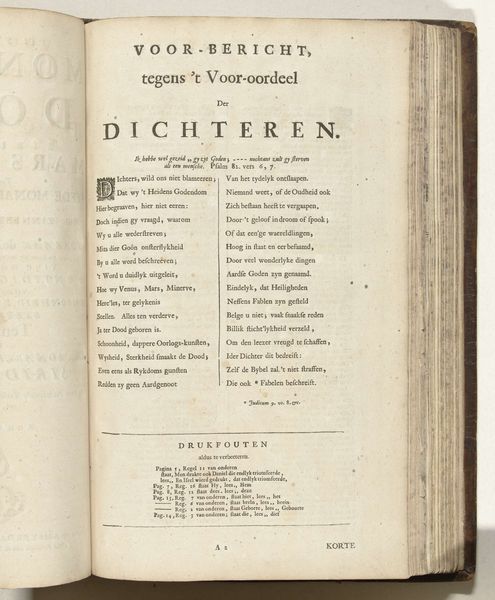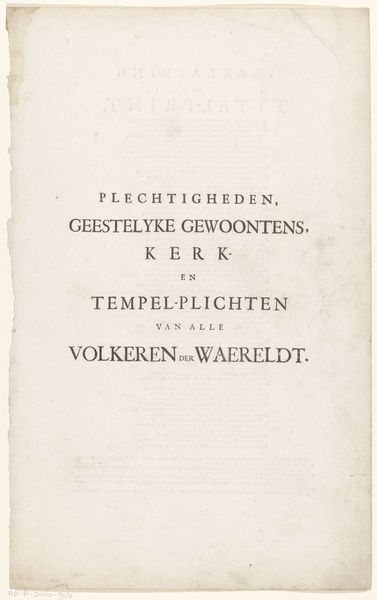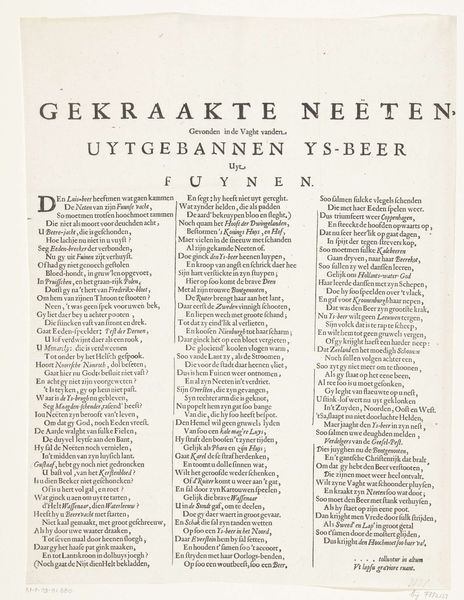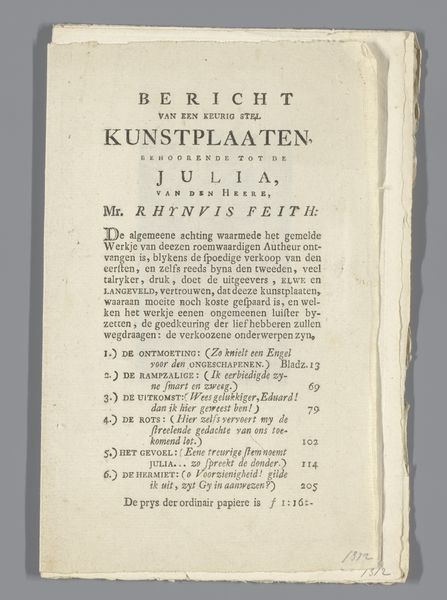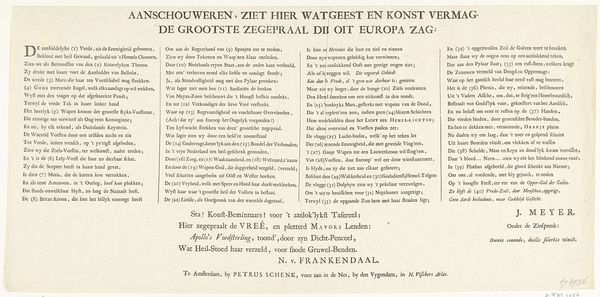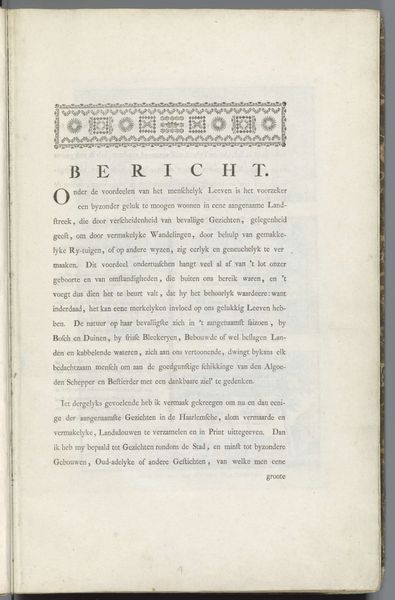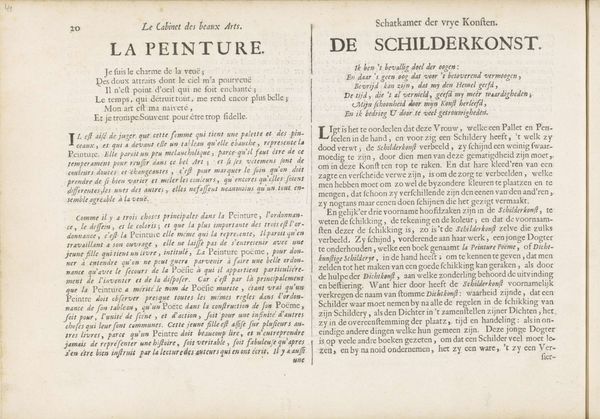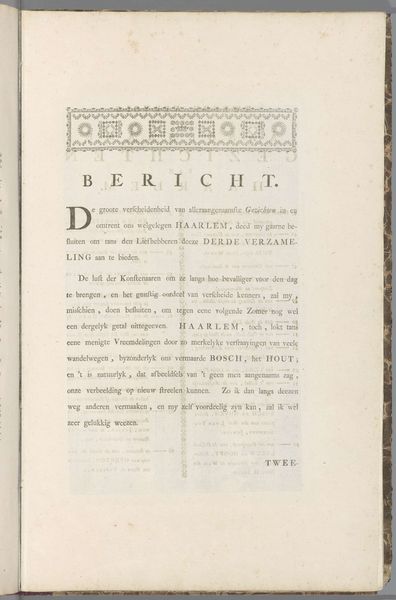
Inhoudsopgave van: Tweede vervolg van twee- en twintig aangenaame gezichten in de vermakelyke landsdouwen van Haarlem, nieuwlings naar 't leven getekend door de beroemde konstenaars H. Spilman en C.V. Noorde, 1763 1763
0:00
0:00
januitgeverbosch
Rijksmuseum
print, paper, typography
#
dutch-golden-age
# print
#
paper
#
typography
Dimensions: height 425 mm, width 260 mm
Copyright: Rijks Museum: Open Domain
This is the index page for a series of prints, ‘Pleasant Views of Haarlem,’ made in 1763 by Jan Bosch after designs by Hendrik Spilman and Cornelis van Noorde. Observe how the page is decorated with a chain motif running along both sides of the text. Chains appear in various forms throughout the history of art. In antiquity, they symbolized unbreakable bonds, often divine or royal. Yet, as time progressed into the medieval period, chains began to signify servitude, restriction, and even damnation, particularly in religious contexts. Our minds subconsciously register these layered meanings. Even when used decoratively, the chain's inherent symbolism evokes a deep, perhaps unsettling, resonance. This complex interplay between conscious design and subconscious interpretation is at the heart of understanding how images wield their enduring power over us. Note how the use of ornaments may convey hidden meanings, engaging viewers on a profound, subconscious level. It's important to remember that symbols don't follow a straight line through time; they circle back, evolve, and find new life in unexpected places.
Comments
No comments
Be the first to comment and join the conversation on the ultimate creative platform.
